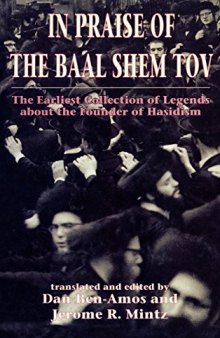 جزییات کتاب
جزییات کتاب
Who was the Baal Shem Tov? Rabbi Israel ben Eliezer (1700-1760), also known as the Besht, was the legendary founder of the Hasidic movement. He taught that humans must worship and cling to God, not only during the practice of religious observances, but in all aspects of life - business, social contacts, and daily affairs. One must strive for the salvation of one's individual soul in order to bring about the redemption of the world. Little historical information is known about the Baal Shem Tov. He did not put his teachings into writing, and he opposed the attempts of others to publish his teachings. The first known document about the Baal Shem Tov, Shivhei ha-Besht, was published in Hebrew in 1814, just fifty-four years after his death. This work contained 251 tales about the Baal Shem Tov. Originally circulated orally, the stories were written down by Rabbi Dov Ber, known as the Maggid of Mezhirich, who was the son-in-law of Rabbi Alexander the Shohet, the Baal Shem Tov's scribe. It is thus probable that the oral sources of the stories were from among the Baal Shem Tov's closest circle. In fact, Rabbi Dov Ber offers the source of each story wherever possible. This authenticity has made Shivhei ha-Besht the most significant work on the Baal Shem Tov. The book has been in print in many versions - Hebrew, Yiddish, Ladino - almost continuously for 180 years. It became a source for many writers, including Martin Buber, S. Y. Agnon, and Elie Wiesel. In Praise of the Baal Shem Tov: The Earliest Collection of Legends about the Founder of Hasidism is the only complete English translation of this valuable anthology. In addition to serving as a biography of the Baal Shem Tov, the tales alsoreflect the life of Jews in Eastern Europe during the eighteenth century and the emergence of the Hasidic movement. By bringing these legends of the Baal Shem Tov's life, personality, and mystical abilities to the modern English reader, Professors Dan Ben-Amos and Jerome R. Mintz have



 دانلود کتاب
دانلود کتاب

 جزییات کتاب
جزییات کتاب





 این کتاب رو مطالعه کردید؟ نظر شما چیست؟
این کتاب رو مطالعه کردید؟ نظر شما چیست؟
